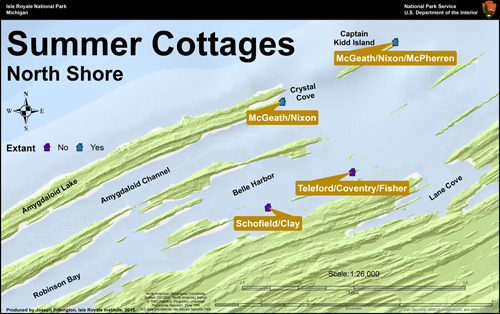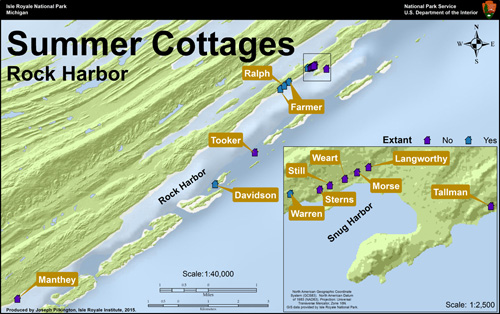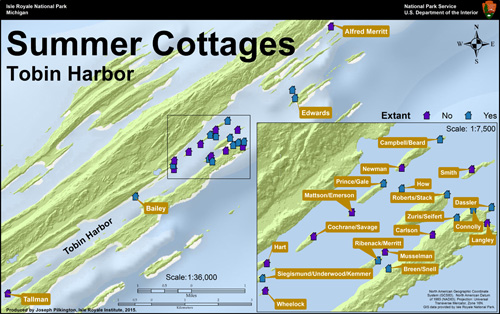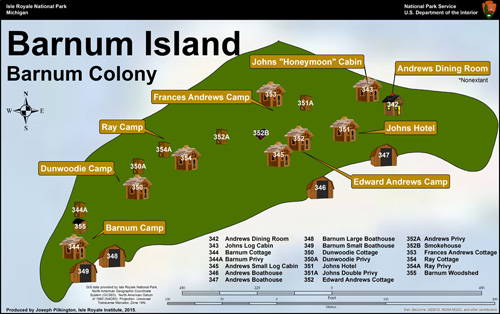-Crystal_Cove.jpg)
Summer Cottages
History
By: Arnold Alanen and Kathryn Franks
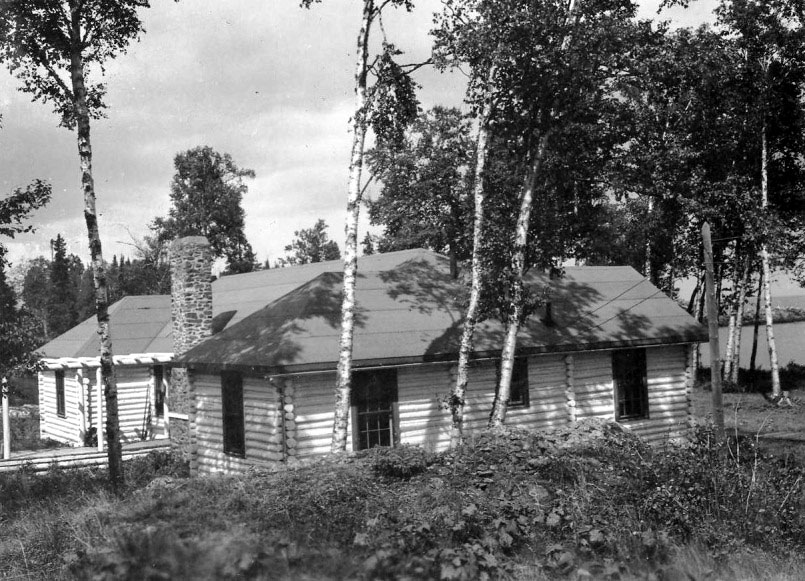
Crystal Cove, 1936: Don Wolbrink Collection, ISRO Archives.
he rise of resorts was accompanied by the buying of summer cottages by vacationers. The Island Mine Company and the Isle Royale Land Corporation sold a large number of small tracts to those desiring a summer cottage. Island locations were particularly valued. This demand became so great that in 1914 the government had to survey a large number of small islands in Tobin Harbor, Washington Harbor, and on the north shore that had been missed in previous surveys. Buyers snapped up these islands.
Over time the summer residents developed strong emotional ties to the island, becoming voluntary "keepers" of island history and protectors of the island. Their appreciation led many, such as Frank Warren of Rock Harbor, to head efforts to preserve Isle Royale from excessive development. Warren, along with other island property owners, formed a group known as the Isle Royale Protective Association, or IRPA, which sought State or Federal ownership for the entire island, including all private inholdings. To meet this goal, the IRPA contacted numerous potential advocates and put forward a number of proposals to State and Federal entities.
The proposal of an Isle Royale National Park resulted in an increased amount of publicity for the island during the 1920s and early 1930s. Albert Stoll, outdoor editor for the Detroit News and leading advocate for the creation of Isle Royale National Park, brought several official inspection trips to Isle Royale and served to promote the area's attractions. Annual trips to Isle Royale were offered to members of the Saginaw YMCA in the 1930s, and the Boy Scouts also began to regularly send groups to the island.
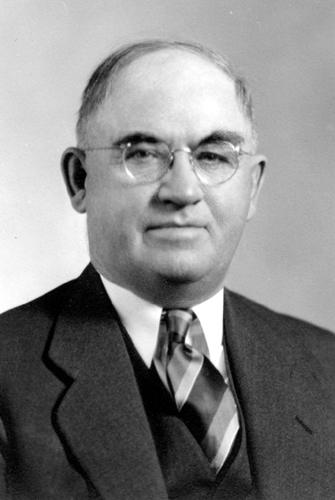
E.G. Willemin: Willemin Collection, Isle Royale National Park.
The creation of Isle Royale National Park Service was further influenced by changing concepts of wilderness recreation in the 1930s. No longer did tennis courts and golf courses seem appropriate for the Isle Royale wilderness; new perspectives called for a more harmonious interaction with nature. Visitors and summer residents had been attracted to Isle Royale for its remote and rugged wilderness qualities. This attitude guided the National Park Service in its planning for Isle Royale National Park. The island was treasured as a wilderness, and biologist Adolph Murie wrote (as a consultant for the National Park Service), "low density of human impact and few encroachments of mechanized civilization would help keep Isle Royale a special place for the visitor..." Murie further advised that trail development, tourist facilities, and publicity be kept to a minimum. Recreation at Isle Royale National Park was to be a "wilderness experience."
Following 1931 enabling legislation, the federal government began to purchase private holdings of land and property on Isle Royale. E.G. Willemin, a federal agent with extensive experience in arranging land transfers in other eastern national parks, was introduced to members of the Isle Royale National Park Commission by Albert Stoll in June 1935. By 1935 a majority of the island had been purchased from the largest landholders leaving smaller clusters of individual properties for eventual purchase or donation. Summer Cottage owners were offered life leases in return for a reduced sale price. As part of the agreement, maintenance and upkeep would be performed by the families. In many respects the presence of the remaining summer camps and cottages on Isle Royale today can be credited to the tenure of the life lease.
Occupancy Agreements
North Shore
Rock Harbor
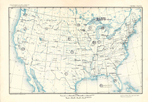
Download Map: PDF (11.7MB)
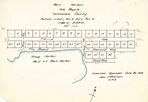
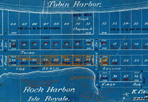
.jpg)
Tobin Harbor
Washington Harbor
Citations
- Franks, Kathryn E. and Arnold R. Alanen, 1999. Historic Structures at Isle Royale National Park: Historic Contexts and Associated Property Types. Department of Landscape Architecture, University of Wisconsin-Madison, January 1999.
